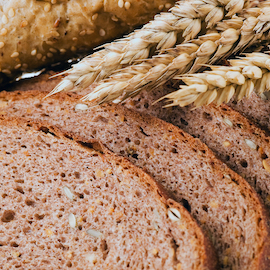05
Jan
Easy Tips and Ingredient Swaps to Get the Most Out of Your Food
 You’re probably cooking more often than you ever have in your life. More cooking means more eating, and more eating means…well, there’s no need to go there. The good news is that as long as you use fresh ingredients and healthy cooking techniques, you can maintain or even improve your overall health by making some simple ingredient additions and swaps.
You’re probably cooking more often than you ever have in your life. More cooking means more eating, and more eating means…well, there’s no need to go there. The good news is that as long as you use fresh ingredients and healthy cooking techniques, you can maintain or even improve your overall health by making some simple ingredient additions and swaps.
Go for Whole Grain
For years, people frowned on carbs. You probably have (at least once in life) felt shamed for reaching for the last roll in the bread basket while dining out with friends. Luckily, recent science has enlightened us, and carbs are (once again) an acceptable part of the human diet – so long as they’re complex (i.e. whole grain). Foods like brown rice, whole wheat flour and whole wheat pasta contain the bran of the grain, making them feel heartier and more satisfying. When prepared properly, they are just as if not more delicious than their traditional white counterparts. You’ll eat less and at the same time take in more fiber and protein. Sounds like a win-win, doesn’t it?
Be Unrefined
There’s nothing wrong with sweetness – your tongue is actually designed to detect it. The problems arise when refined sugars are involved. Though they come from plants, the extensive processing these sugars undergo results in a product that is void of any nutritional value found in those plants. Consequently, products like granulated sugar, brown sugar and high-fructose corn syrup contribute to obesity, type-2 diabetes and heart disease. You can keep the sweetness and the health benefits too by switching to unrefined sweeteners. Dates, agave nectar, sucanat, coconut sugar and even maple syrup are all easy-to-find options that offer a natural and nutritious sweetness to your food.
Spice It Up
Besides giving everyday dishes more character and pizzazz, spices hold intrinsic health benefits and can greatly increase the nutritional value of any dish. Luckily, you don’t need to run out to stock your pantry full of exotic, seemingly other-worldly jars of powdered flavorings. The spices you likely already have will do just fine to start. Unassuming cinnamon can help regulate blood sugar. Potent and earthy, cumin and fennel seeds are known to aid in digestion. Capsaicin-rich (translation: spicy) chilies like cayenne improve circulation and overall cardiovascular health. Perhaps the granddaddy of all spices, turmeric has anti-inflammatory, anti-carcinogenic and antioxidant properties. Bonus: the more spices you use, the less salt you’ll need to make your food taste delicious!
Add Some Color
In general, colorful veggies provide more nutrition than their simpler counterparts. Colors in vegetables are indicative of important vitamins, minerals, compounds and antioxidants. Eating the rainbow isn’t a new concept – most people know that bright green, red, orange, and yellow veggies should be incorporated into as many meals as possible throughout the day. However, today’s grocery stores and markets offer a variety of colored vegetables that were once only available in white. So swap that white onion for a purple one. Pick up that sweet or purple potato instead of the usual russet. Even cauliflower (perhaps the plainest vegetable in existence) can now be found in hues of yellow, green or purple. All you need is your eyes to guide you to the best option for your body.
You have to eat to live, and how you eat determines how you live. By switching out a few basic kitchen staples, you can experience exciting new flavors and textures while boosting the nutritional value of any of your meals.




Easy Tips and Ingredient Swaps to Get the Most Out of Your Food